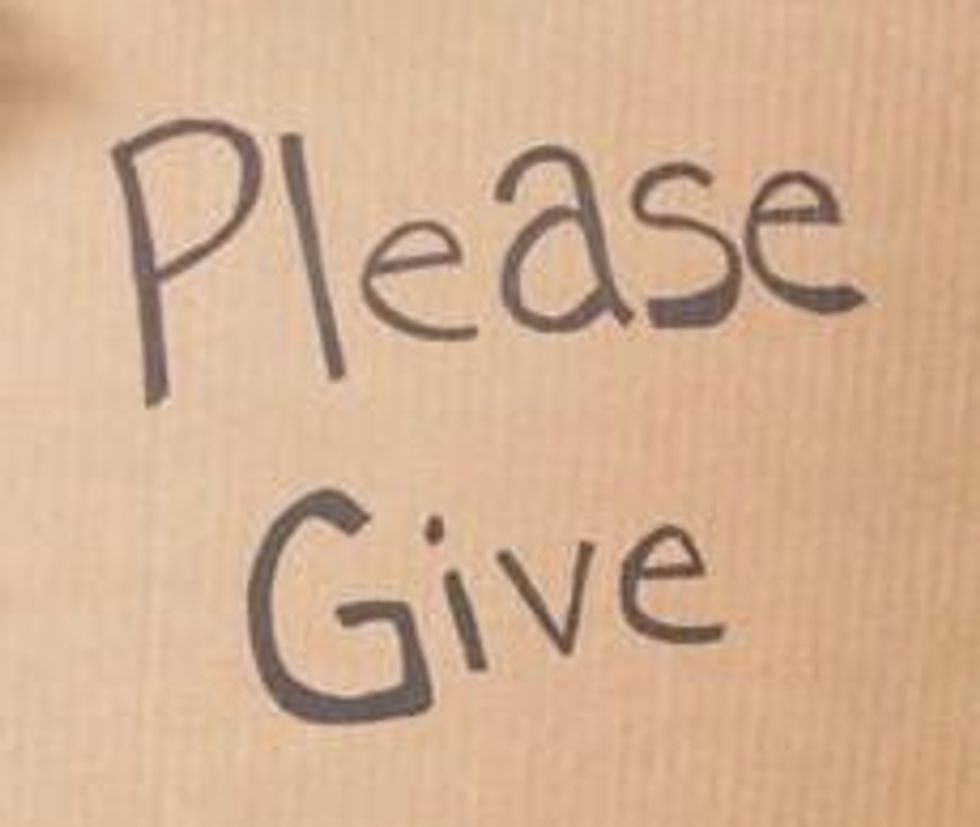You are a person who cares. You see injustice and people suffering, all over the world, and you know it's not right. You go looking for some way to fix it, but you know you can't do it alone. So you find an organization tackling the problems that matter to you. If you can, you give a donation to support their work.
But how can you tell that you've made a lasting difference?
People want to know that their money is used effectively to help those in need. But many have become discouraged--even suspicious--after multiple scandals in recent years, over money being mismanaged and misspent by organizations they trusted.
Yet even if an organization's books are squeaky clean, there are still bigger questions that you as a donor need to ask yourself. The organization may be honest and transparent--but are they effective?
To win your trust, non-profits have to demonstrate that we are using your money well. We work to offer proof that your support helped to dig a well, build a clinic, or create some other life-saving change--through photos, videos or numbers. But these "proofs" can't tell the whole story.
What's missing from, say, a photo of a new clinic?
Yes, you get visual confirmation that your money helped to build that clinic. But how was it built? Who decided on it? Who now has control over this important community resource? How will it be managed (and funded) to ensure that it lasts into the future? Those answers will decide whether that clinic succeeds and contributes to sustained positive change.
If you want your giving dollars to go as far as possible - to make the most lasting difference -you need to ask these questions and be sure that the organization appealing for your support is asking them, too.
Here are three simple steps to help you get started.
First, you find an organization that prioritizes the leadership of people within the community where they're working. When local people play leadership roles, set priorities and make decisions, they build skills and resources that serve them for the long-term. When you see local leaders designing and managing programs (or being trained to do so), you're seeing an organization that doesn't rely on outsiders' assumptions of what's best for a community. You can be confident that your donation will give that community the resources to implement their own solutions and build resilience.
Next, you make sure that the organization recognizes the crucial need to include marginalized voices within the community. Women, in particular, are often disproportionately harmed by disaster, war or the unjust policies you want to help change. That's because they faced violence and discrimination even before the crisis at hand, leaving them poorer and often excluded from decision-making. But women are not passive victims. They are critical first-responders in caring for those most threatened by any crisis, including children, the elderly and the disabled. When you equip a woman with resources and training, she can benefit an entire community.
The third step is to confirm that the organization does more than address the symptoms of crisis, but tackles the root causes as well. Creating lasting change depends on understanding what puts people at risk.
It's one thing to rush food aid to communities in crisis--it's another thing to also recognize that global food aid delivery systems are broken and inefficient, and work to change that. It's one thing to provide urgent medical care and counseling to rape survivors--it's another thing to also advocate for genuine security and to develop programs that can foster cultural change about masculinity, women and violence.
So here are those steps again. They're just a start, but they'll put you on the right track to empowered, impactful giving.
Step #1: Make sure that those at the heart of the crisis were consulted from beginning to end and that the organization provides services in a way that strengthens communities.
Step #2: Make sure that the organization relies on the voices of women and other marginalized members of the community.
Step #3: Make sure that the organization meets immediate needs and helps create long-term positive change.
The value in your gift cannot just be measured in dollars and cents. It is an embodiment of your trust in an organization to put your principles into action. And effective social change organizations will use your gift to fuel the lasting change you want to see in the world. No one can put a price on that.

